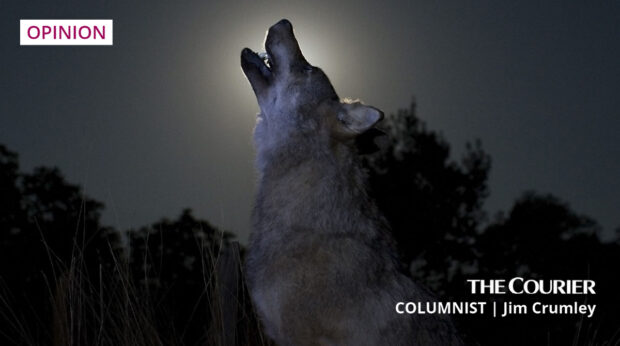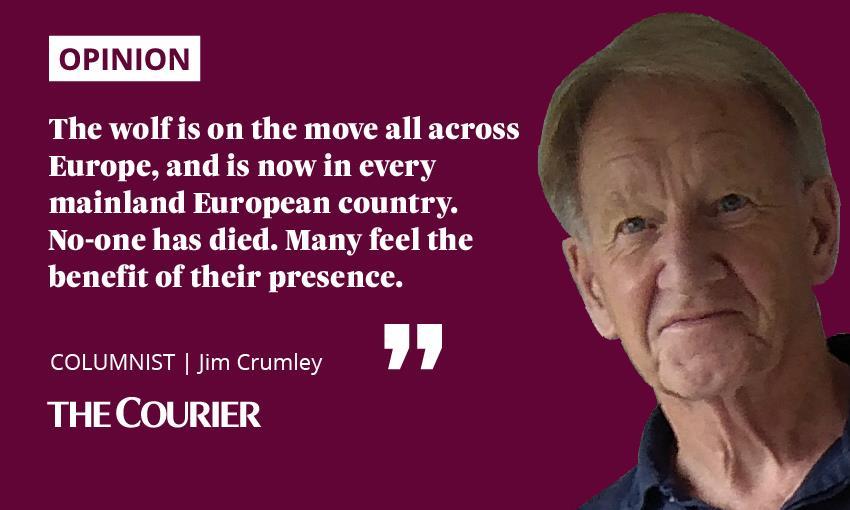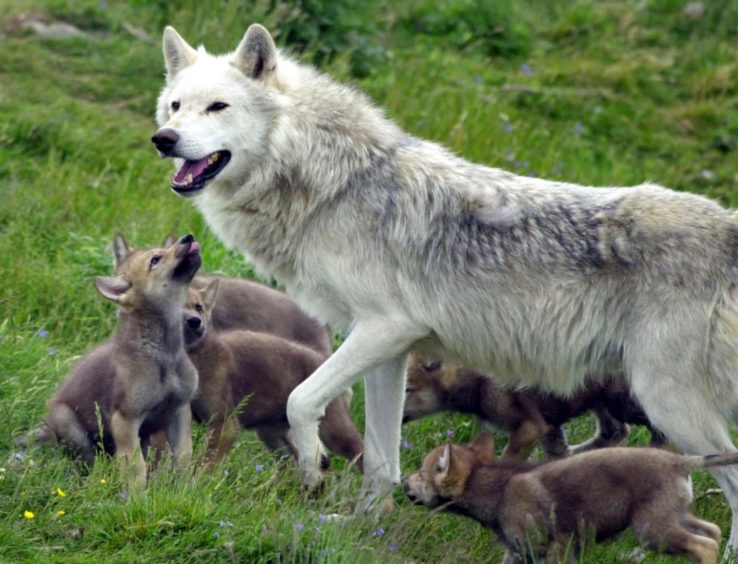A few years ago, I went to Norway while working on two programmes for BBC Radio 4 titled The Real Wolf.
Among the people I interviewed were two filmmakers who had spent eight years following one pack to make a programme for Norwegian television.
Their names were Bjorn and Gaire. In one conversation Gaire was picture-painting for me, relating some of the sights and sounds of their wolf encounters.
At one point he told me about hearing the cubs in the early hours and then the answer from the alpha male, two kilometres away.
He mimicked the deep wolf voice rising then falling again in unpredictable bluesy slides and intervals.
We were standing in a river valley of lakes and forested hills that yielded at last to 6,000-feet mountains, and something shivered between my shoulder blades.
I asked what that sound meant to him.
He sighed, thought about it for a few moments, then he said this:
“You sit there in the winter time, waiting, hoping that something will happen. You freeze a little, you take a little cup of tea. And you’re looking. And looking. At trees full of snow.
“Nothing happens. Maybe you hear a little bird. Then you hear this noise. Starting very low. And you’re thinking, ‘Where is it? Where is it?’ You can feel how your whole body is looking for where this wolf is.
“It’s a very special feeling. It’s the voice of the wild.
“And this voice, you bring it with you in the body, for many, many, many days.”
What place the wolf in Scottish rewilding?
All this came back to me as I read a newspaper interview with Francesca Osowska, chief executive of NatureScot, in which she said that campaigning for reintroduction of “totemic predators” like wolves and bears could damage rewilding efforts in Scotland by alienating people who live in the countryside.
“We need to think about restoring all of nature, not just large mammals…The vision I want is of a nature-rich future. Nature-rich means we’re all touched by and living in harmony with nature and can benefit from it.”
I read that and I thought, oh, here we go again.
The same old spinelessness that characterised Scottish Natural Heritage is alive and well in the new brand.
What does rewilding mean? Francesca Osowska @NatureScotCEO explains in @heraldscotland why ‘rewilding’ isn't so much about wolves and bears but restoring the ecological balance in our natural habitats, which also helps fight climate change 🌱👇https://t.co/LFxtiaKicD
— NatureScot (@nature_scot) September 27, 2021
It’s still looking after the landowners and farmers who complain about sea eagles killing lambs and hen harriers killing grouse, while the corpses pile up in the stink pits of the land.
Doling out licences for farmers to kill beavers has become emblematic of NatureScot’s vision of a nature-rich future.
Ms Osowska seemed to be offering a “vision” that suggests a troubling lack of understanding about how desperately nature in Scotland needs wolves.
And how transformative their impact would be for biodiversity and for the health of the ecosystem.
The wolf is transforming Europe
Through thirty years of writing about wolves including what is still the 21st century’s only book about the wolf in Scotland, and of speaking to people who have worked with and lived alongside wolves in Alaska, Scandinavia, and now the Netherlands, and speaking at an international wolf conference in Edinburgh where I met wolf biologists from all over Europe and the USA…through all that, the only passionately dissenting voice I encountered was a Norwegian sheep farmer.
The truth is that Ms. Osowska’s vision in which “we’re all touched by and living in harmony with nature and can benefit from it” is more achievable with the reintroduction of wolves than any other single nature conservation initiative.
The wolf is on the move all across Europe, and is now in every mainland European country.
No one has died.
Many feel the benefit of their presence.
When will NatureScot prioritise nature?
Shouldn’t our government’s national agency for nature conservation put the interests of nature first?
The easiest way for people to learn about and live in harmony with and benefit from all of nature’s animals is simply to spend time in their company.
That’s how it works in countries where the land ethics are rooted in the 21st century rather than the 19th, like Scotland’s.
As for bears, and if you seek a nature-rich future and living in harmony with nature, consider this, from Alaskan writer Nancy Lord on the subject of living close to grizzly bears:
“Bears resemble us in a way that is unique among animals. I don’t mean that they resemble us as chimpanzees and other primates do. The connections are different: they have to do with power and quiet authority and who we think we are or wish we were, with origins that aren’t evolutionary but spiritual.
“It’s not coincidental that indigenous cultures the world over have held the bear in a special sort of awe, that they consistently speak of bears in kinship terms and treat them with utmost respect. The bear is like us yet is not us. Perhaps the bear is our connection back to something lost and still treasured, another way of knowing. The bear is nature and culture, together.”
That’s what I call a nature-rich vision.


